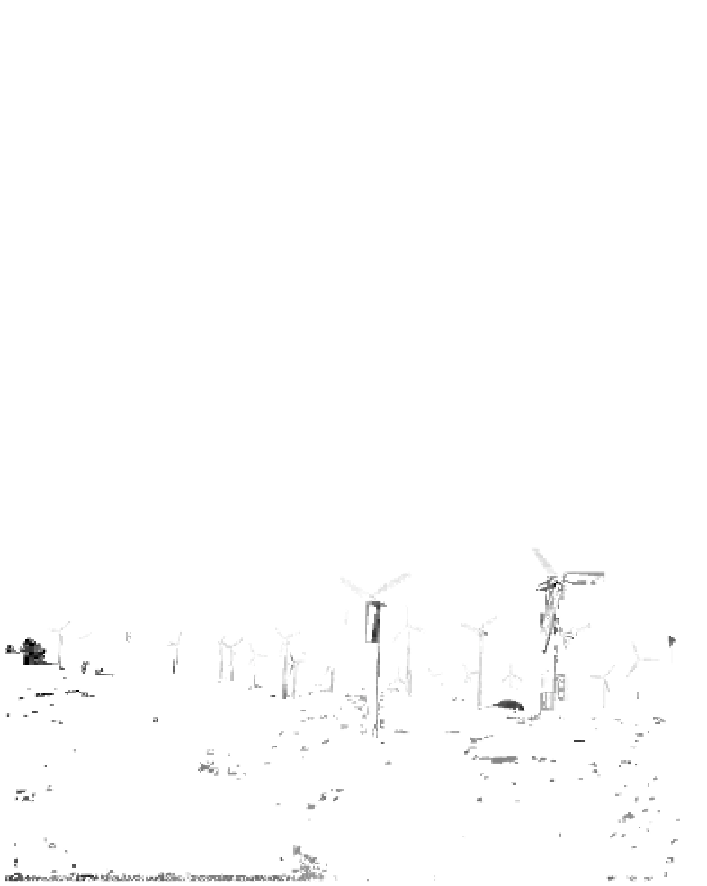Environmental Engineering Reference
In-Depth Information
that early time. The wind turbines used for “wind farming” were
almost all derived from 1970s federal research activities. These
designs were generally based on private engagement. Their
development was furthered on a federal basis in order to obtain
reliable and economically viable machines for a future US market.
Some of the Californian wind turbines were tested at Rocky Flats,
a test centre in Colorado. Often a Rocky Flats test certificate made
a wind turbine more attractive and trustworthy on the market.
The first years of wind farm development were characterised
by a lack of regulation. It was totally sufficient if a wind turbine—
no matter which type—was just put up. No one asked for reliability,
any references or if the machine was actually working. This
inevitably led to fraud. For example, it happened that tube towers
with a wooden board bolted at the top were put up on a field. A
photo taken from the far distance led investors to think it was a
professional wind farm. It was anything but a wind farm.
Figure 23.1
Panoramic view of Danish Nordtank 65/13 turbines with
silver-grey stepped tubular towers, typical for early Danish
wind turbines, Tehachapi, 2010 (Photo: Arne Jaeger).
In 1982, wind farms expanded slightly, and more American
manufacturers entered the market, such as Carter and ESI.
Contrary to the American market dominance there was a punctual
but remarkable development at both Altamont and Tehachapi.
Among the hundreds of American machines two Danish Vestas
turbines were put up in 1982 in Altamont. Additionally, five should
be Belgian WindMaster 75 kW machines were placed nearby and
started operation the same year. And Oak Creek Energy Systems, a



Search WWH ::

Custom Search